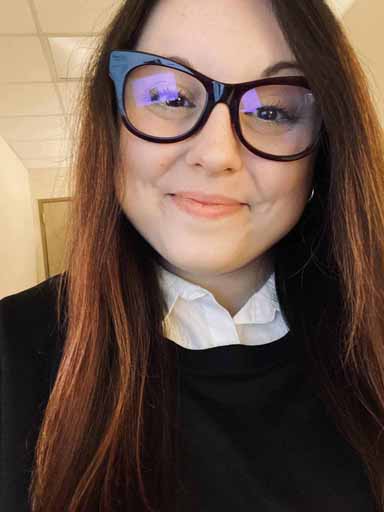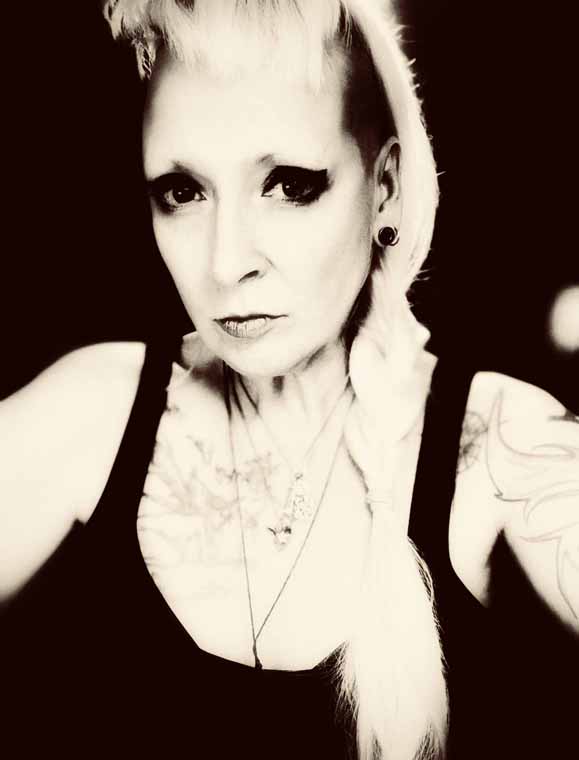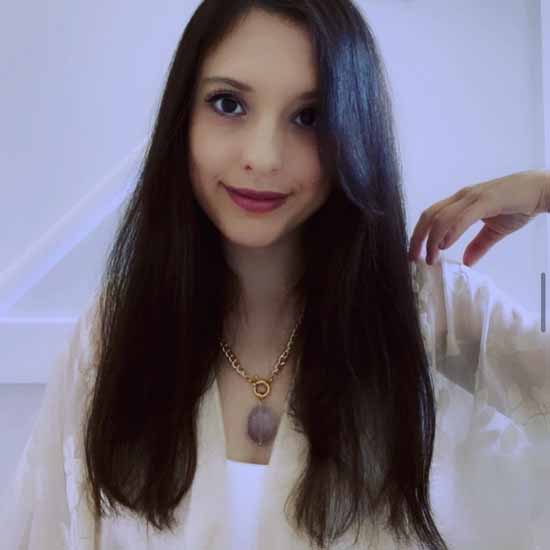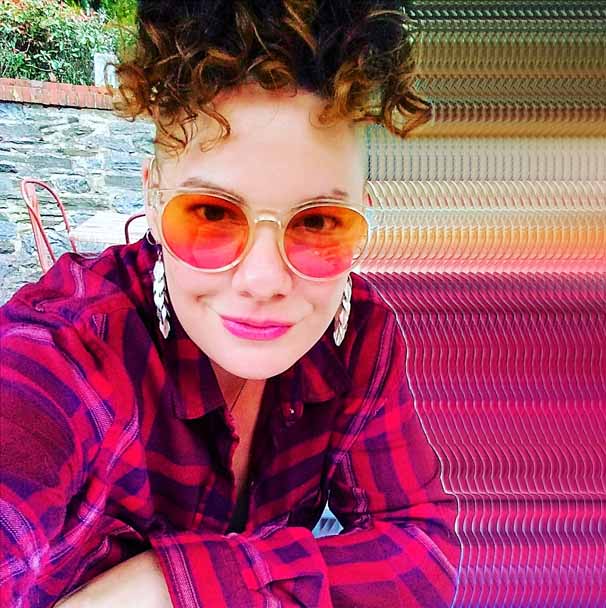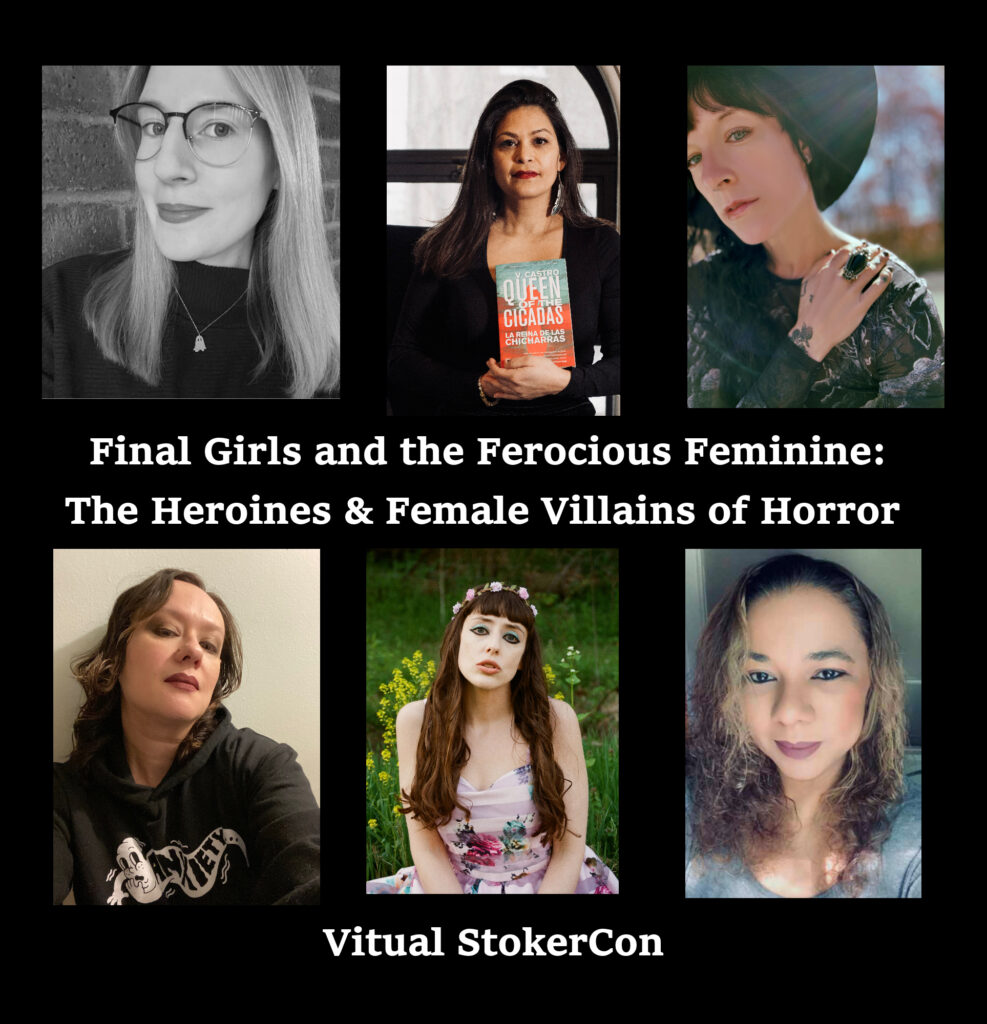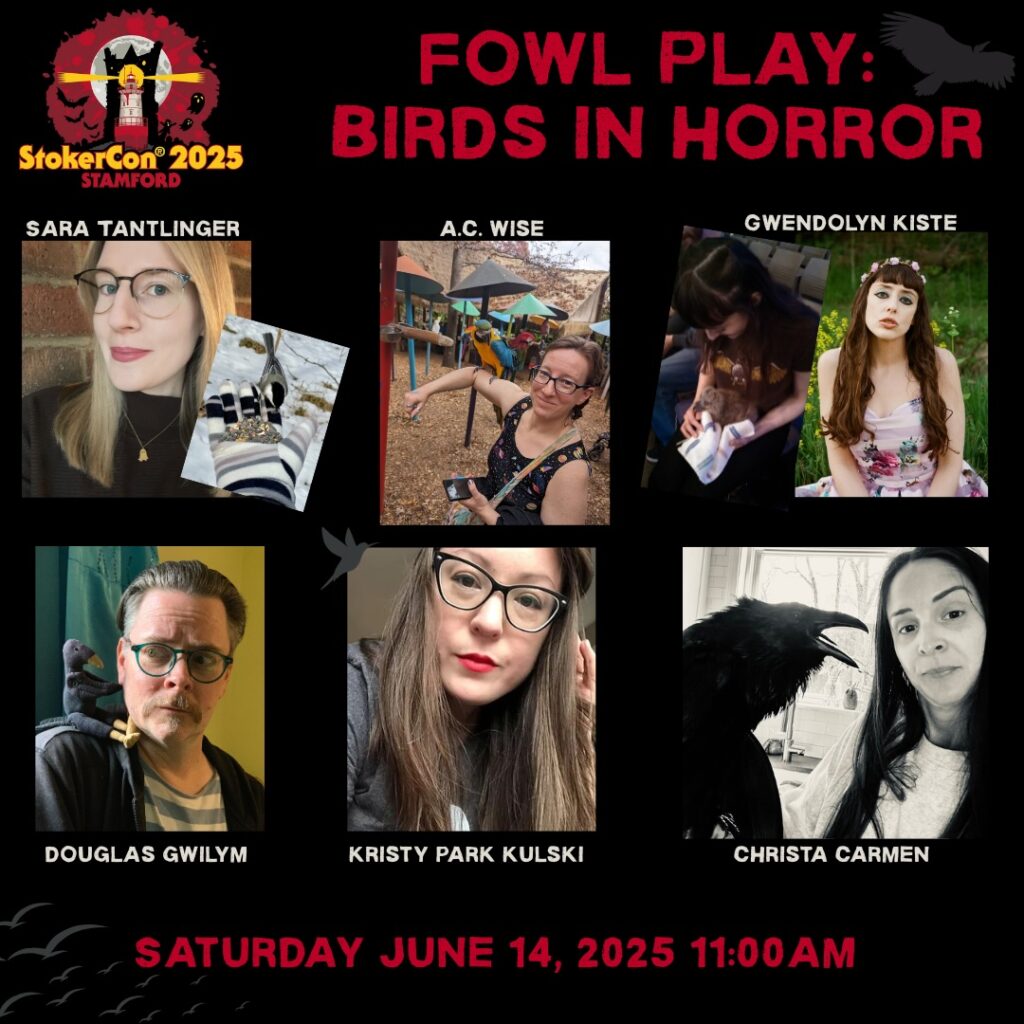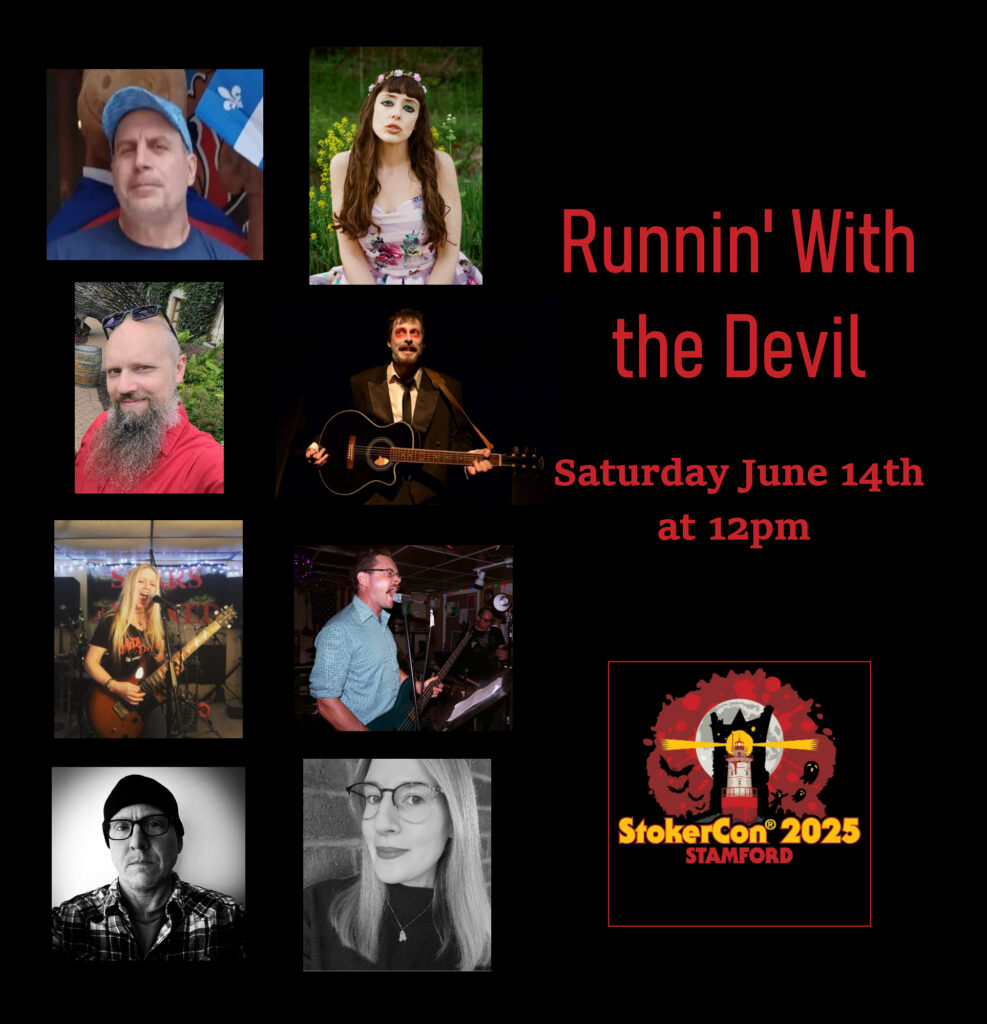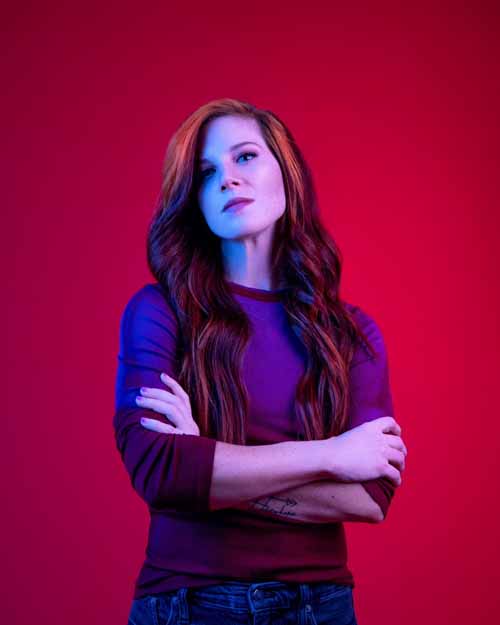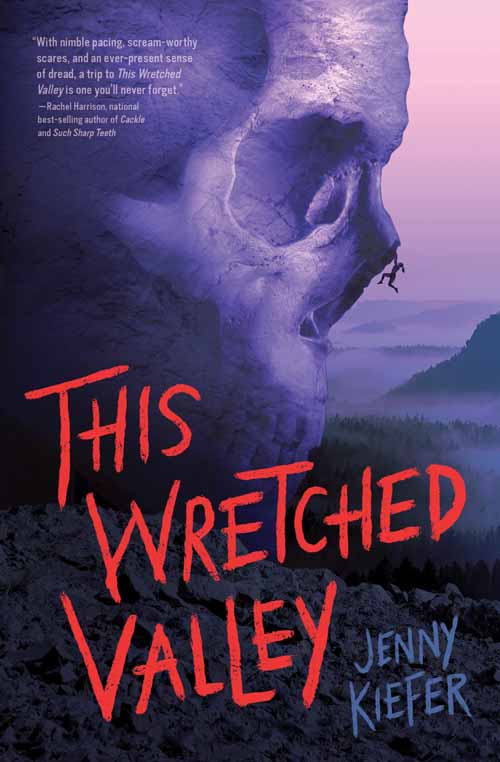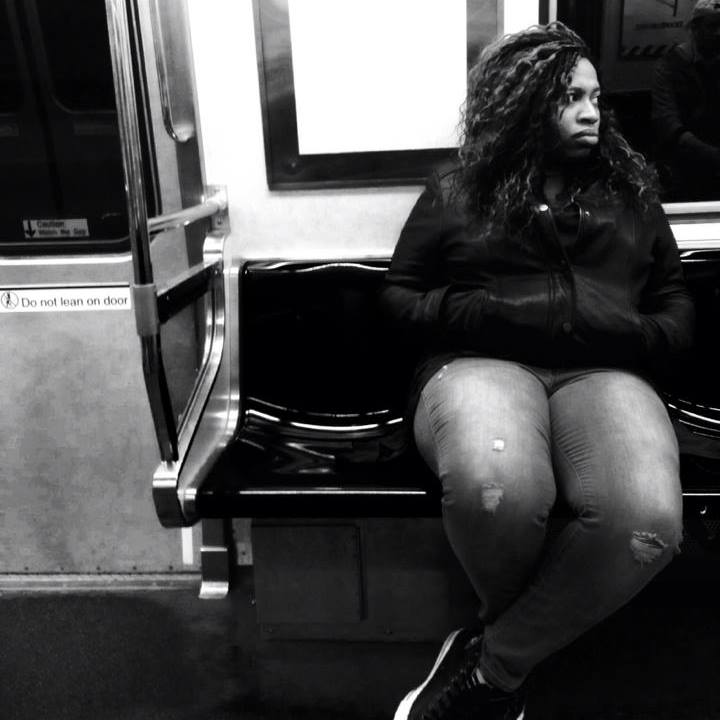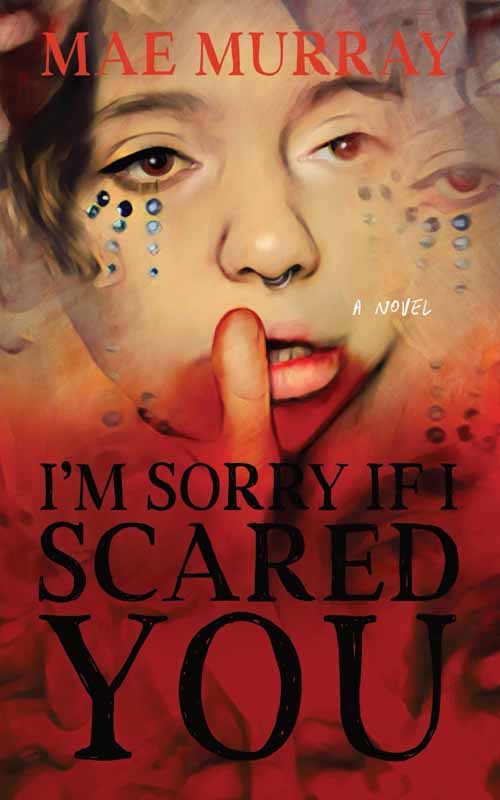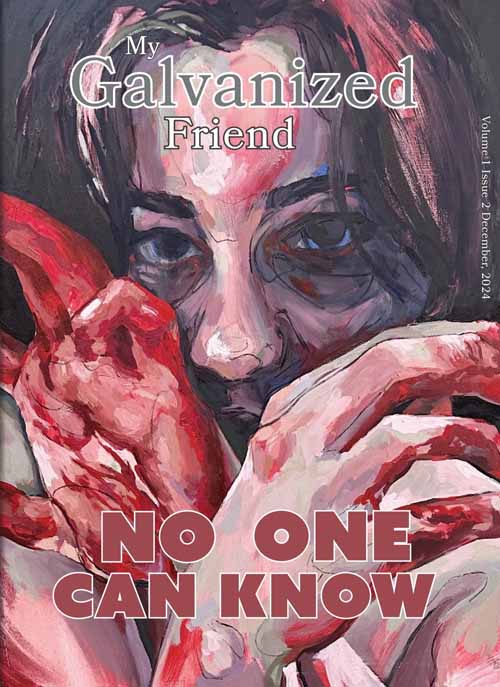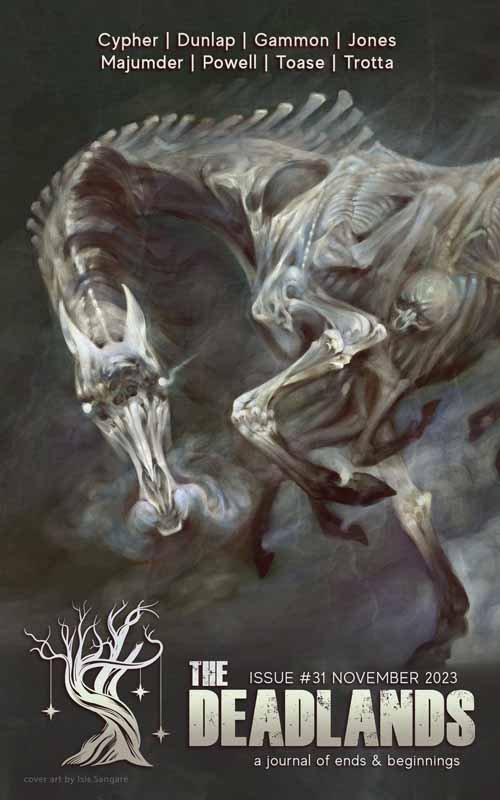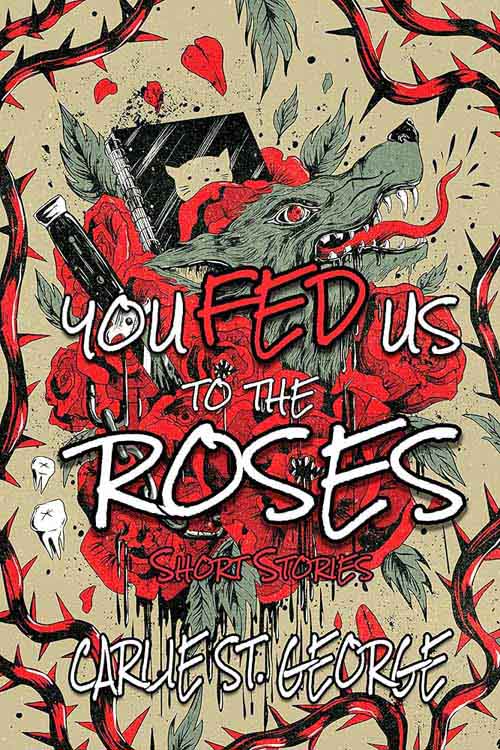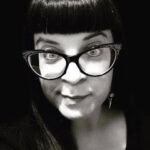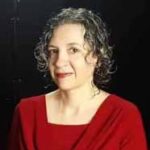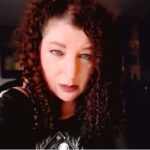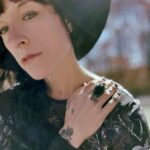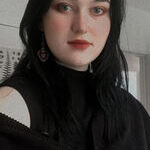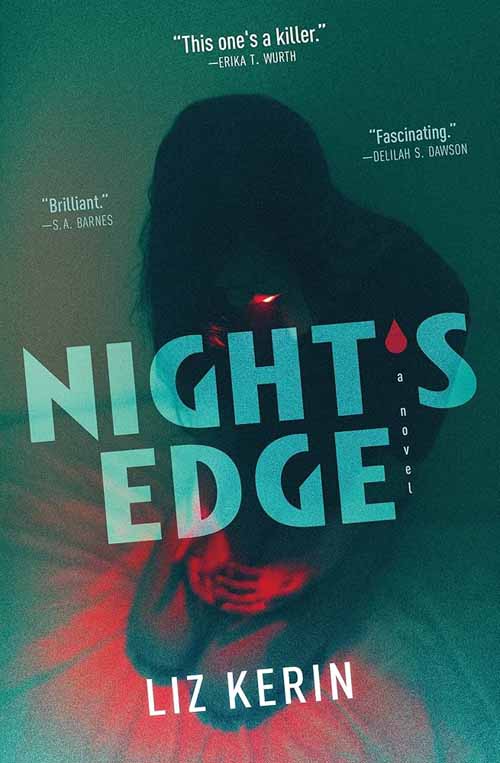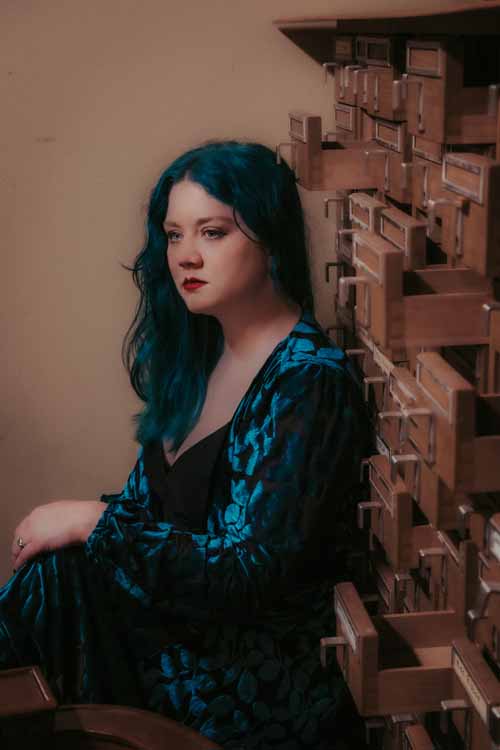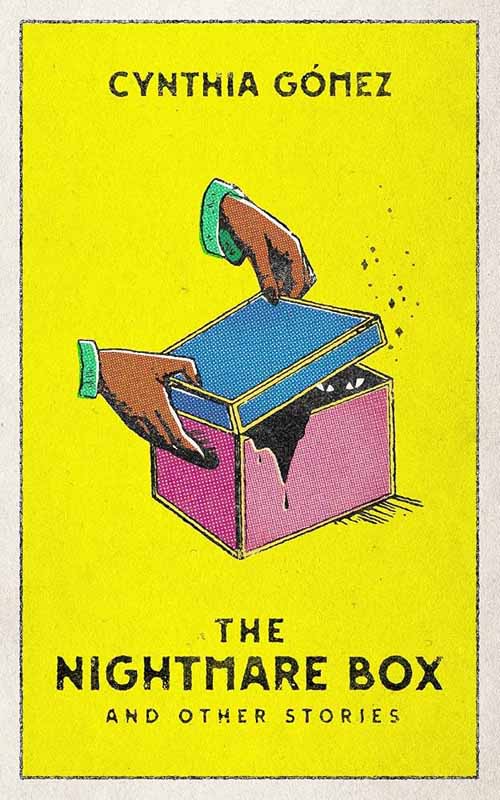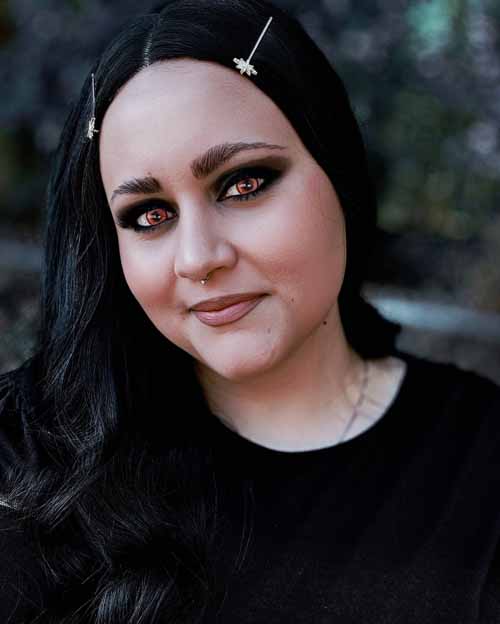Welcome back! This week, I’m thrilled to spotlight some of the authors from the forthcoming Howl: An Anthology of Werewolves from Women-in-Horror, edited by Lindy Ryan and Stephanie M. Wytovich. Full disclosure: my story, “Our Howls like Dirges, Our Eyes like the Moon,” is also included in the table of contents. But needless to say, I adore werewolves (after all, my next novel is a sapphic werewolf story), so it’s been such tremendous fun talking with these authors about their thoughts on lycanthropy, femininity, horror, and so much more.
The Howl anthology officially releases next week, so in the meantime, let’s meet our authors and howl at the moon together, shall we?
Tell us a little bit about yourself and your story in Howl.
A.C. WISE: Hello! I’m A.C. Wise. I’m an author and a reviewer. I write both long and short fiction, and I really enjoy genre-hopping and mashing up genres. When it comes to my story in Howl, I wanted to play with the idea of a werewolf story that may or may not be about werewolves at all. Depending on how you read the story, it could be literal, but it could also just be about the monstrousness of the expectations society places on people, especially young women, to behave and present themselves a certain way in order to be acceptable. On the literal interpretation side of things, I wanted to play with social media challenges and trends, and I thought it would be fun if the hot new thing everyone wanted to do was to become undead. From there, what happens if you don’t play by the rules and choose to become a different kind of monstrous creature other than the “socially acceptable” one?
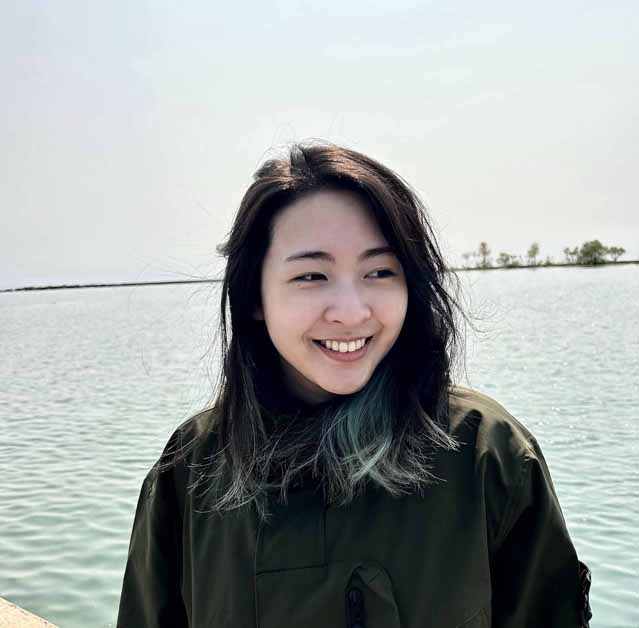 AI JIANG: I am a Chinese Canadian writer born in Changle, Fuzhou, China, currently based in Markham, Ontario. My story in Howl is inspired by the way male expectations as well as societal conformations concerning how a woman “should be” restrict feminine nature and personality. But what I find most fascinating is that upon reflecting on the story after writing it, I realized that many woman in my family as also suppressed by the woman who came before them as they try to implement the same expectations they had to grow up with on their daughters rather than attempting to break free.
AI JIANG: I am a Chinese Canadian writer born in Changle, Fuzhou, China, currently based in Markham, Ontario. My story in Howl is inspired by the way male expectations as well as societal conformations concerning how a woman “should be” restrict feminine nature and personality. But what I find most fascinating is that upon reflecting on the story after writing it, I realized that many woman in my family as also suppressed by the woman who came before them as they try to implement the same expectations they had to grow up with on their daughters rather than attempting to break free.
LINDY RYAN: Hi! I’m Lindy Ryan, author of Bless Your Heart, Another Fine Mess, and more, and editor of anthologies including Into the Forest, Mother Knows Best, and Howl! My story “Bone Marrow” is a visceral coming-of-age tale where a girl, brutalized by her mother’s lessons on womanhood, ultimately sheds shame and embraces her feral, wolfish self beneath the moon. It’s a body-horror meditation on menstruation, motherhood, and reclaiming wild female power.
KAILEY TEDESCO: I’m a poet and professor currently living in Allentown, PA. My primary interests are folklore, the occult, horror cinema, pulpy lit, and fashion. My most recent collection, MOTHERDEVIL (White Stag Publishing), explores my experiences with PPD through the lens of Mother Leeds, the NJ Devil’s folkloric mother. This collection is currently (and gratefully) nominated for an Elgin.
I teach a course on witches in literature at Moravian University. Every semester my students and I engage with a thorough history of the Salem Witch Trials. I’ve taught this course over 13 times now, and every single time both the students and I find ourselves struck by the two dogs who were tried and put to death for witchcraft in 1692. The entirety of this history is horrific, but I think the fact that animals, too, were targeted causes us all to really confront the innocence and vulnerability of every one of the victims. It’s a harrowing moment. There are not a lot of known facts about the dogs or why, specifically, they were targeted. My story, “The Devil Has No Dogs” really begins in this space of curiosity and anger. I wanted to explore the story of the two dogs while also examining the hypocrisy and power dynamics during the trials as a whole. In the story, the dogs are imagined women who willingly engage with satanic witchcraft as a means of survival. Through this fiction, the dogs and the women are one, giving them each a power they otherwise would not have.
STEPHANIE M. WYTOVICH: Sure thing! My story is titled “13 Ways to Swallow a Full Moon” and it documents a woman’s life journey in an experimental narrative that discusses hunger, queerness, and acceptance. This was one of those times when the title came before the story idea, so it was exciting to help bring this feral little thing to life.
 CHRISTA CARMEN: I live in Rhode Island and am the Bram Stoker Award-winning and two-time Shirley Jackson Award-nominated author of The Daughters of Block Island, Beneath the Poet’s House, and the forthcoming How to Fake a Haunting, as well as the Indie Horror Book Award-winning Something Borrowed, Something Blood-Soaked, the Bram Stoker Award-nominated “Through the Looking Glass and Straight into Hell” (Orphans of Bliss: Tales of Addiction Horror), and coeditor of the Aurealis Award-nominated We Are Providence and the Australiasian Shadows Award- and Ditmar Award-nominated Monsters in the Mills.
CHRISTA CARMEN: I live in Rhode Island and am the Bram Stoker Award-winning and two-time Shirley Jackson Award-nominated author of The Daughters of Block Island, Beneath the Poet’s House, and the forthcoming How to Fake a Haunting, as well as the Indie Horror Book Award-winning Something Borrowed, Something Blood-Soaked, the Bram Stoker Award-nominated “Through the Looking Glass and Straight into Hell” (Orphans of Bliss: Tales of Addiction Horror), and coeditor of the Aurealis Award-nominated We Are Providence and the Australiasian Shadows Award- and Ditmar Award-nominated Monsters in the Mills.
My story in HOWL was actually something I’d had in my head for a while before Lindy and Stephanie invited me to be a part of the anthology. Not long after my first novel came out, I was killing time in a coffee shop before a bookstore event and got the idea for a place women could go to in their minds to escape from sexual abuse, coercion, rape, assault, etc. I jotted down an opening scene in the back of a notebook, but it was too abstract, too unmoored, and, frankly, too, well, toothless. It needed something else to make it work.
When the amazing editors of HOWL reached out to ask about my interest in the anthology, I immediately said yes, and not long after I started brainstorming for my story, I made the connection between this place women could go in their minds and transforming into a werewolf. I won’t say too much more because I don’t want to give the ending away, but suffice it to say that writing for this project was even more rewarding than I anticipated, because it allowed me to marry my passion for werewolves and my love of Lindy and Stephanie’s previous work with this interesting idea I’d been playing around with for more than a year.
WENDY WAGNER: I’m a lifelong resident of the Pacific Northwest, a place where people are intensely divided about wolves. Farming and ranching is really concentrated on the east side of the Cascade Mountain range, and people working in those industries have fought tooth and nail against the reintroduction and protection of wolves. Here in Oregon, there’s a lot of intense feelings and even violence centered around the issue—wolves have been illegally poisoned, shot, and trapped, and activists have faced really scary harassment.
One other weird thing about living in this area is that deep cultural divide is mirrored by the laws managing wolf management. There’s an actual line running through Oregon state where on one side wolves are an at-risk species whose management is regulated by federal laws that (currently) help protect them. On the other side, wolves are not at-risk, and they’re much less safe.
When I was invited to be a part of Howl, I instantly knew I wanted to write a story about the political reality of wolves in this part of America and what that would mean to a werewolf. But I also started writing this story at the same time federal abortion protections were removed, leaving in place a patchwork of state laws where women faced radically different laws in different places. The situations seemed so painfully similar I had to put them together.
 SHANNON KEARNS: It’s such an honor to be a part of Howl! I’m in awe of the other amazing women in horror who are in this anthology. I write horror poetry and recently published my first poetry collection, The Uterus is an Impossible Forest, with Raw Dog Screaming Press, edited by Stephanie M. Wytovich. I’m excited to have two poems in Howl, “Waxing Moon,” and “Mad Woman.” My writing centers around my experience with birth trauma and postpartum depression. Both of these poems were written in response to my experience sitting awake with my son at all hours of the night, warding off anxiety and intrusive thoughts related to my PPD. I felt monstrous in those moments, and I reimagine the mother as a werewolf in these poems.
SHANNON KEARNS: It’s such an honor to be a part of Howl! I’m in awe of the other amazing women in horror who are in this anthology. I write horror poetry and recently published my first poetry collection, The Uterus is an Impossible Forest, with Raw Dog Screaming Press, edited by Stephanie M. Wytovich. I’m excited to have two poems in Howl, “Waxing Moon,” and “Mad Woman.” My writing centers around my experience with birth trauma and postpartum depression. Both of these poems were written in response to my experience sitting awake with my son at all hours of the night, warding off anxiety and intrusive thoughts related to my PPD. I felt monstrous in those moments, and I reimagine the mother as a werewolf in these poems.
KATRINA MONROE: Super Moon takes place is the not so distant future, with a fascist regime at the helm of American government. Georgia, our very young main character, bares witness to the violence that comes to her front door when the moon draws closer to the Earth, causing women, in their rage, to change.
As for me, I’m a wife and mother of two almost-adult children, eyes fixed firmly on the door as I sharpen my nails and teeth.
DONNA LYNCH: I’m a writer and musician from Maryland, and while I primarily write horror & dark poetry, I enjoy getting to use my short story muscles now and then. Despite doing it my entire life, writing doesn’t come easily to me, so the process naturally puts me in a dark place—something I didn’t realize until recently. So, it’s a good thing I enjoy horror. Or maybe it’s why I write horror.
“Silver Boots” came to me a bit easier than usual, because I set it in the same universe as my story “Flood Zone” in the Baba Yaga anthology “Into the Forest”. That wasn’t my initial plan, but I quickly found my protagonist living in that world.
JESSICA MCHUGH: Greetings, friendos! Jessica McHugh here! I’m a 3x Bram Stoker Award nominated poet, as well as a novelist, playwright, and visual artist working under the speculative umbrella. But horror is my home. I’m so jazzed I had this opportunity to write a feminine werewolf story for Howl. I had previously written one I absolutely loved for the infamous pizza anthology, “Tales from the Crust,” so I was eager for the challenge to explore the topic again. For Howl, my story, “A Town with Too Many Girls,” centers on Pascal, a lonely teen girl trying to hold it together in a town that despises her. Longing to feel like part of a pack, she suffers bullies and insults and ostracization, until a taxidermied wolf head gives her a glimpse into a different, wilder life.
Have you always been a fan of werewolves? Do you remember the first werewolf story or film you ever came across? Also, do you have a favorite werewolf?
A.C. WISE: I’ve always been a fan of all things monstrous and horror related, werewolves included. I know I encountered werewolf stories before this, but the first one that really sticks out in my mind is Wolf, the 1994 movie starring Jack Nicholson and Michelle Pfeiffer. I haven’t tried to re-watch it recently. There’s a good chance it doesn’t stand up and that it’s truly horrible, but high school me adored it and re-watched it several times. As for a favorite werewolf, does Bigby Wolf from the Fables series by Bill Willingham count? He might be more werewolf adjacent, but he’s a fun character, so I’m going to go with that as my answer.
AI JIANG: Werewolves were always interesting creatures to me, but I never really saw them on their own, usually depicted next to vampires like in Twilight, and because the vampires were often the protagonists, the werewolves were always depicted more so as antagonists. As for a favourite werewolf, I’d say Chul-soo from A Werewolf Boy.
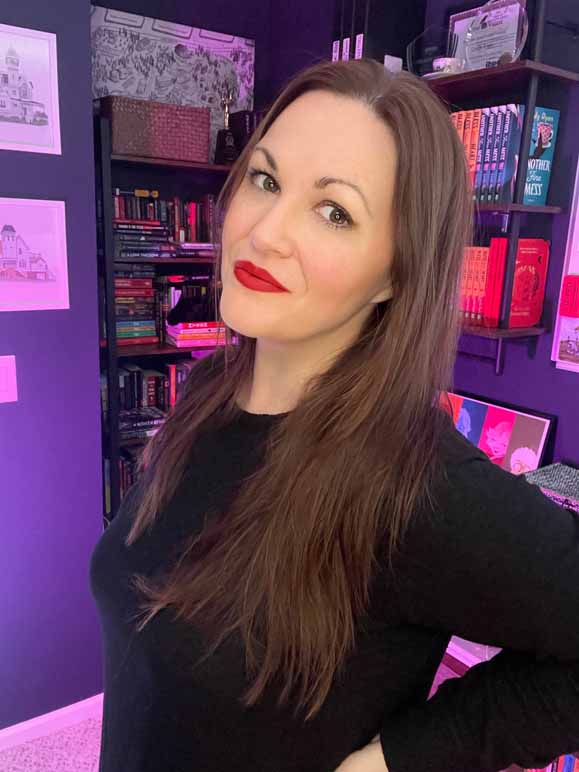 LINDY RYAN: What girl doesn’t love werewolves, really? Myself, I’ve always loved the mix of fear and freedom. The first werewolf film I remember seeing was Silver Bullet, based on Stephen King’s novella, Cycle of the Werewolf—still a fave, but not one that serves a female reader. That belongs to Ginger Snaps, which came along and made girlhood feel feral in a way I connected to (and still do).
LINDY RYAN: What girl doesn’t love werewolves, really? Myself, I’ve always loved the mix of fear and freedom. The first werewolf film I remember seeing was Silver Bullet, based on Stephen King’s novella, Cycle of the Werewolf—still a fave, but not one that serves a female reader. That belongs to Ginger Snaps, which came along and made girlhood feel feral in a way I connected to (and still do).
KAILEY TEDESCO: I am such a huge lover of dogs, so you would think werewolf narratives would have always been a fast favorite for me. In many of the earlier werewolf films I’d seen, though, the animal was usually villainized and then harmed or killed. I’ve always had an especially hard time with that.
When I was an undergrad, my Brit Lit professor introduced me to Angela Carter. It was through her fiction that I really saw the magic in werewolf narratives. The Company of Wolves became an easy favorite of mine. I also love Ginger Snaps and I think the werewolf transformation scene in season one of Hemlock Grove is peak body horror.
I most love werewolf narratives where the wolf is treated with humanity and their anger is validated.
STEPHANIE M. WYTOVICH: While I tend to be Team Vampire, the wolf has been one of my favorite animals since I’ve been young. I’ve always had a pack of dogs around me, I’ve been obsessed with the moon for as long as I can remember, and I have a wolf pendant I keep close on my body (I even wore it when I gave birth to my daughter).
Watching An American Werewolf in London was instrumental in my love for monsters, and I remember first learning about it when I went to Universal Studio’s Horror Make Up Show. They talked about Rick Baker, who won the Academy Award for Best Makeup for David Kessler’s (played by David Naughton) infamous transformation scene. After seeing that, I was hooked, and when I later found out that Baker also worked on The Wolfman (2010) and Michael Jackson’s “Thriller,” well, the man is just a legend.
Ginger Snaps came out in 2001, and I vividly remember watching it in my parent’s living room. There’s a line where Ginger says to Brigitte: “I get this ache… And I, I thought it was for sex, but it’s to tear everything to fucking pieces.” I remember smiling and smiling, and just nodding my head like there, someone gets its! From that point on, when I think of female rage, I always think of her. My queen.
CHRISTA CARMEN: I am embarrassed to say that I actually had a weird aversion to werewolves for a while. I think I consumed a few lame films and/or novels (and the Twilight films were all the rage from when I was about 23 until I was about 28, so I think that went a long way toward turning me against them), and I’ve been working to make up for that bias for the last few years.
Matthew Brockmeyer and I cohost a true crime podcast called Murder Coaster, and we also cover a lot of just general mysteries, strange occurrences, and horror-related fare. Two Octobers ago, we did an entire month’s worth of werewolf-related episodes (and Gwendolyn, you were actually a part of our bonus “Horror Writers on Werewolves” episode!), including a fun grab-bag episode in which we went through the history of werewolves in film, and that helped a lot in introducing me to everything I’ve been missing out on in terms of werewolf lore.
With that being said, I think my most recent favorite werewolf I’ve come across is Rory Morris from Rachel Harrison’s Such Sharp Teeth. I’m a big fan of Rachel’s work (and, of course, she wrote the introduction to HOWL, and it’s unsurprisingly amazing), and I found Rory to be relatable and likeable with how she approached both transformation and her regular ol’ human life.
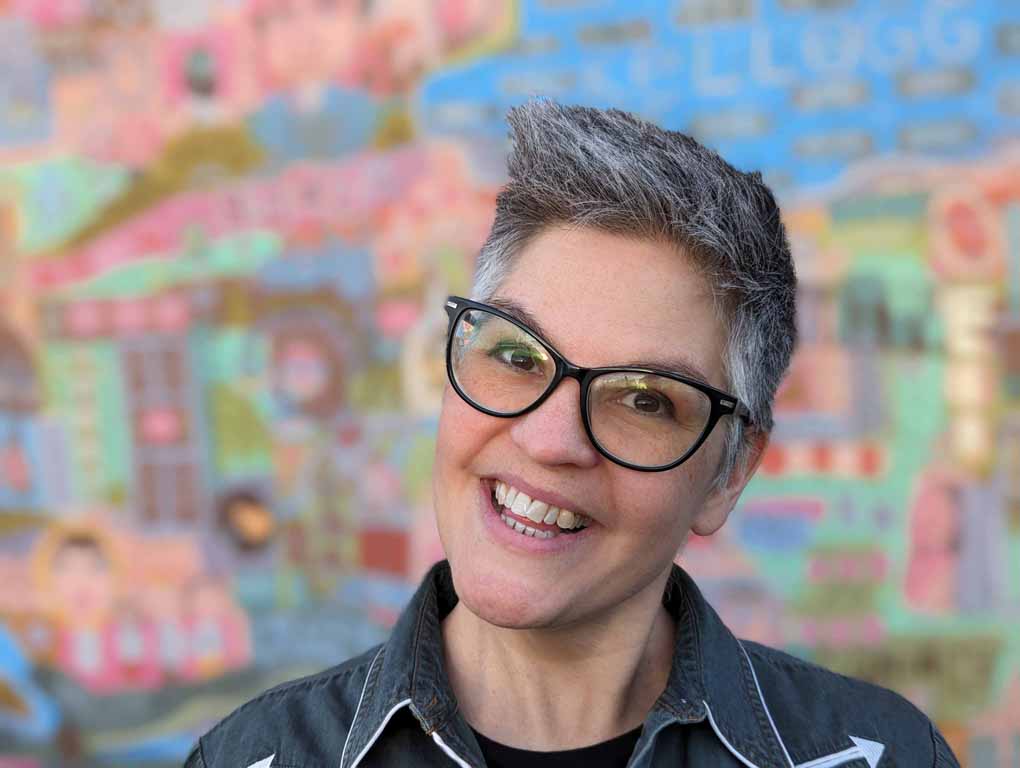 WENDY WAGNER: I was obsessed with werewolves when I was a kid. I really wanted to be one! I’ve always loved animals, so the idea of being able to shift back and forth between humanity and the world of the wild animal always sounded really amazing.
WENDY WAGNER: I was obsessed with werewolves when I was a kid. I really wanted to be one! I’ve always loved animals, so the idea of being able to shift back and forth between humanity and the world of the wild animal always sounded really amazing.
It’s hard to know what the first werewolf book I ever read was. My hunch is that it might have been Charles L. Grant’s The Dark Cry of the Moon—I read his whole Universe of Horror trilogy, and I was obsessed with them. The covers were fantastic.
There are so many wonderful werewolves to love, but my favorite is probably Karen from Emil Ferris’s amazing My Favorite Thing Is Monsters. That graphic novel operates at the border between magic realism and speculative fiction, so it’s hard to know if Karen is truly a werewolf, but she sees herself as one, so I will accept her truth. Plus, she’s the cutest werewolf I’ve ever seen.
SHANNON KEARNS: I have long been drawn to the symbology of the moon, and the way the female body responds to its cycles. When I was growing up, the werewolves I encountered in stories were often depicted as males. I loved the story of Remus Lupin in the Harry Potter series. Later, reading Rachel Harrison’s Such Sharp Teeth was a point of inspiration to reimagine the archetypal werewolf as female.
 KATRINA MONROE: This might be an unusual answer, but the first character I thought of was the wolf in Little Red Riding Hood. Much of my horror consumption is fairy tale or gothic in nature, and while it’s not explicit in the story, Red’s wolf feels very were-like as it crawls beneath the covers in the grandmother’s clothes.
KATRINA MONROE: This might be an unusual answer, but the first character I thought of was the wolf in Little Red Riding Hood. Much of my horror consumption is fairy tale or gothic in nature, and while it’s not explicit in the story, Red’s wolf feels very were-like as it crawls beneath the covers in the grandmother’s clothes.
Recently I’ve fallen in love with the character of Enid in Wednesday on Netflix. A late-blooming teen werewolf who just wants to be part of a pack. She’s loyal and fierce, but also unapologetically herself.
DONNA LYNCH: I remember constantly checking out a folklore book from the elementary school library that had woodcut-style illustrations of werewolves dismembering and stealing away with Medieval village children. It was terrible and fascinating.
And in my ‘favorite films of all times’ list is ‘The Company of Wolves’. The whole film is a fever dream masterpiece thanks to Angela Carter’s story and Neil Jordan’s direction, but there are segments that became my entire personality for many years. Specifically, Danielle Dax’s young wolf girl who quickly learns she’s not meant for the world of man, and the witch who takes revenge of a wedding party.
The Red Riding Hood tale has a huge place in my heart because of being raised at times by only my grandmother and my mother—three generations of women who had to learn to fend for themselves in the woods, with many successes some painful failures.
JESSICA MCHUGH: I’ve never been a big werewolf fan, actually, so I don’t think I have a favorite, but I am very glad that werewolf stories exist because there’s so much within the lore to explore and expand upon. I always loved Silver Bullet—that was probably the first one I remember really enjoying, in film and prose—along with the Peter S. Beagle story “Lila the Werewolf,” silly as it is. Plus, the werewolf transformation in the bonkers show Hemlock Grove is insanely cool, and “Teen Wolf” is pretty rad.
Join us next week for the official release of Howl as well as part two of our werewolf roundtable!
Happy reading, and happy howling!



